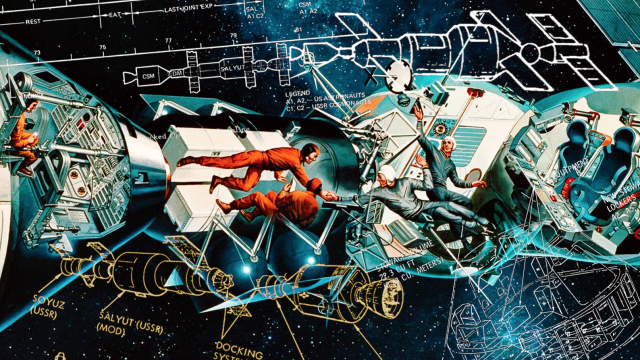I’d think that even casual dorks interested in humanity’s actual space programs would be aware of the very first joint mission between two spacefaring countries: the Apollo-Soyuz Test Project of 1975, where an American Apollo spacecraft and a Soviet Soyuz spacecraft docked in Earth’s orbit, allowing the crews to have a famous space handshake, work together, and try out one another’s food-in-tubes. What I didn’t realise was that, initially, the mission was supposed to me much grander in scope, with the Americans visiting a Soviet space station.
I mean, there must have been some point where I did realise this, since I was reminded about it when I found a PDF on my computer called INTERNATIONAL RENDEZVOUS AND DOCKING MISSION (SD 71-700) from December of 1971.
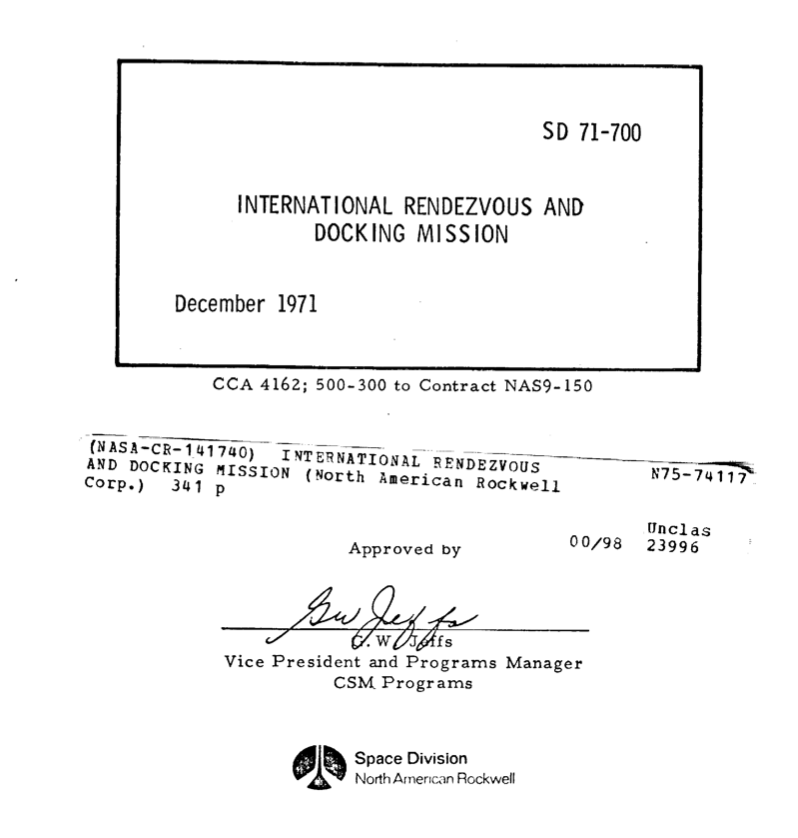
I’ll be honest — I have zero memory of ever seeing this document before, but, here it is, and it’s fascinating. I knew immediately what it had to be about when I saw the extraordinarily crappy and degraded title page image on the second page:

I know it’s really hard to make out there, but space geeks will find plenty in this infinitely-Xeroxed picture to get excited about: it’s clearly an American Apollo command and service module (CSM) approaching, with some sort of docking mechanism, a Soviet Salyut space station.
Now, if we slide a bit deeper into geekdom, we can note that the Salyut space station appears to have solar panels in a formation that only appeared on one Soviet station, Salyut 1, and since this is from late 1971 and Salyut 1 was launched in April of 1971 and an updated version of Salyut didn’t launch until 1973 (well, a military one that was different — the closest civilian one wasn’t until 1974) then this makes sense.
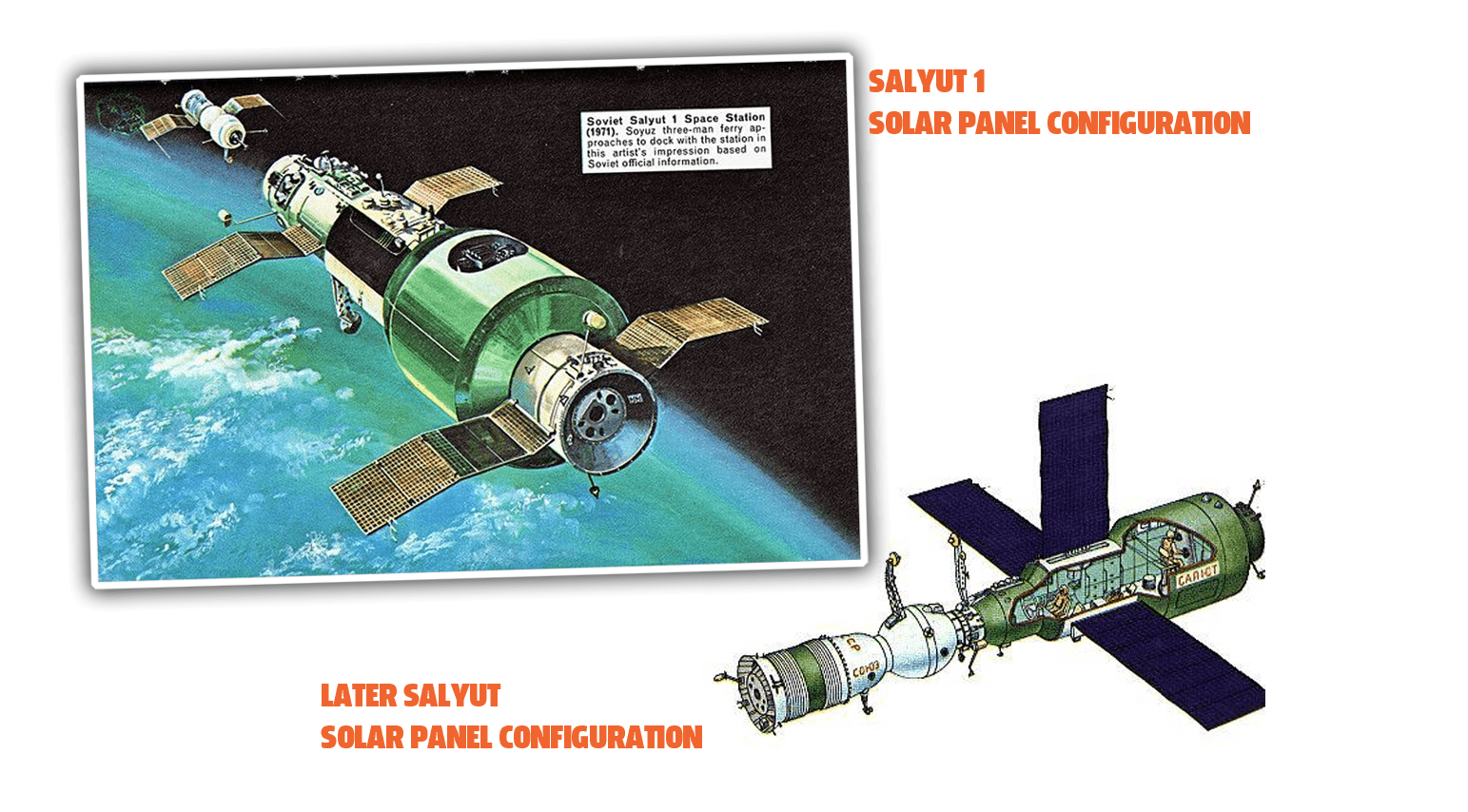
What doesn’t make sense is that the Salyut has a docking port at the rear, with what looks to be a Soyuz spacecraft docked to it, and Salyut stations wouldn’t have two docking ports until Salyut 6 was launched in 1977, nearly six years after this report.
What the hell is going on here?
From what I can tell in this report, and from what this surprisingly little-told history confirms, is that back in late 1971, when the United States and the Soviet Union were planning their first joint space mission, the original plan was to send an Apollo crew to a Soviet Salyut space station.
To understand why this is a big deal, it helps to know a bit about the significance of the Salyut stations. These were the very first space stations ever, and, coming as they did right on the heels of the American’s remarkable moon landing triumphs, the Salyut was what the Soviets could point to and pretend they were never really interested in landing on the moon, since they were way more interested in space stations.
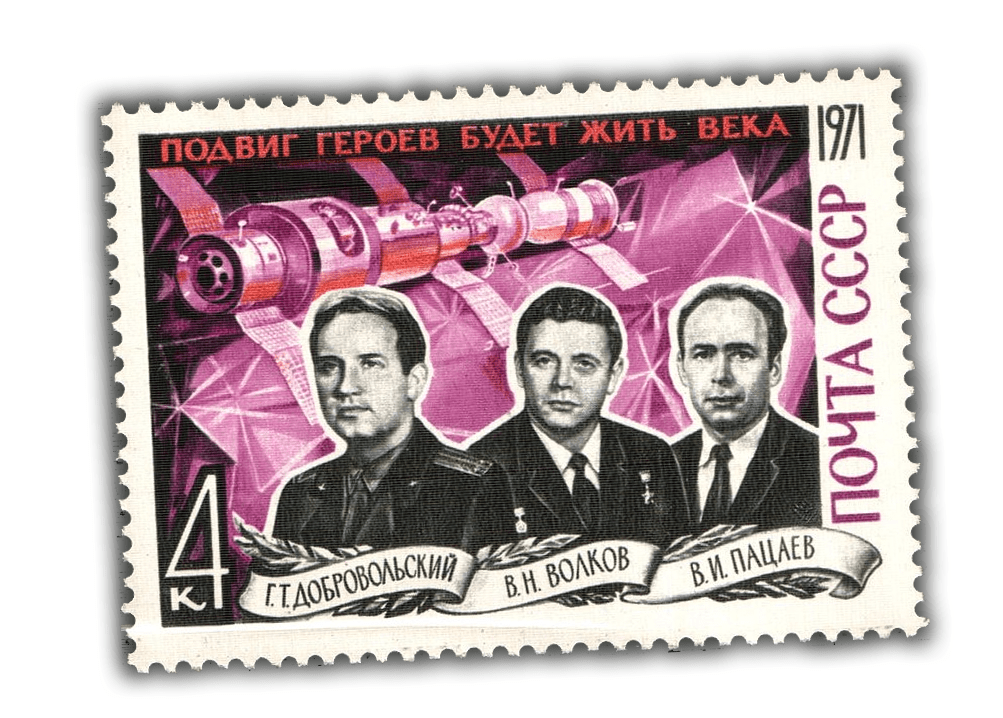
While this isn’t really true — they absolutely wanted to land on the moon, but, for a number of reasons, couldn’t quite pull it off — the creation of the first space station is, of course, a huge achievement.
The first Salyut was a mix of triumph and tragedy, though, as the three-person Soyuz 11 crew that first occupied and worked on the station set records for longest time in space — 22 days — but all were killed when the atmosphere from their return capsule vented out during re-entry.
That makes the timing of this report even more interesting — it’s being proposed after the tragedy of Soyuz 11, after the re-entry and destruction of the whole Salyut 1 space station in October of 1971, but long before the next Soviet space station launched.
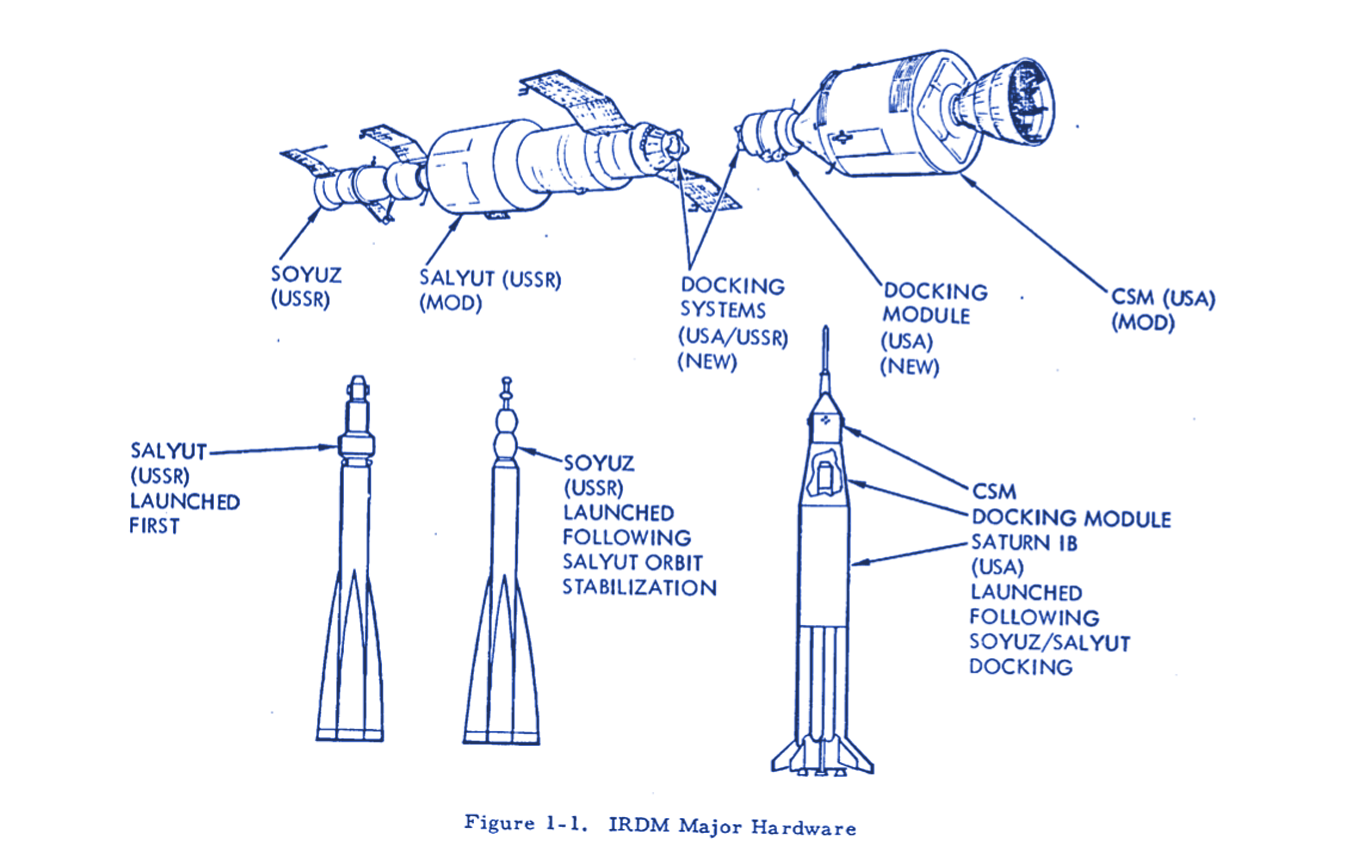
That’s why the mission plan calls for three launches, the first to launch a presumably all-new Salut space station — this one designed with docking ports fore and aft — and two other launches to put the crews in orbit, one in an Apollo, one in a Soyuz.
All of this predates America’s first space station, Skylab, as well, and also seems to be the first time that an international docking module was proposed.

The final version of this docking module eventually flew on the 1975 Apollo-Soyuz mission, but, as you can see, it’s essentially the very direct descendent of the module that was described in this 1971 Apollo-Salyut document:
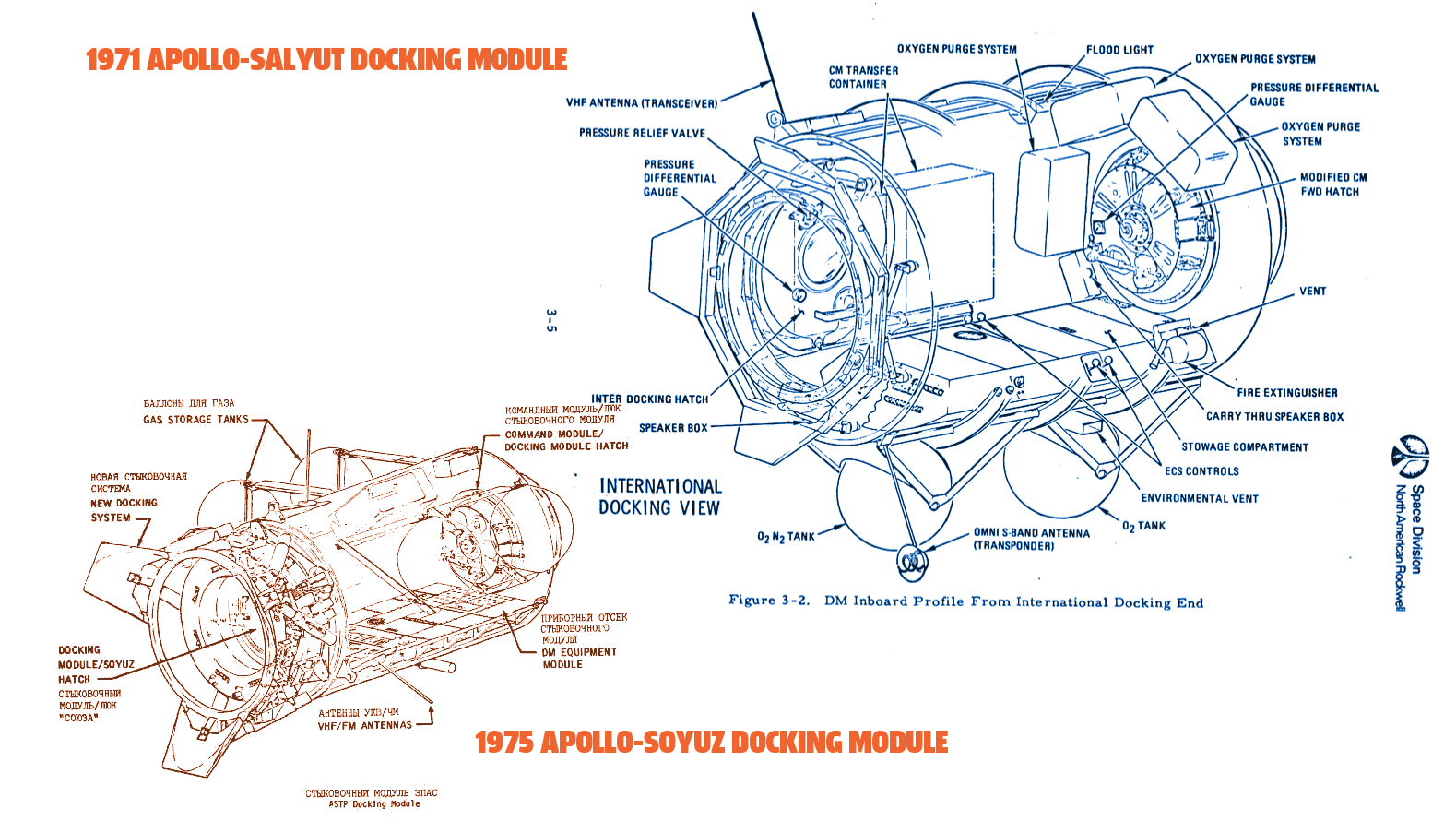
What’s fascinating to think about is just how much more research and science and experimentation could have been done on the mission if the Apollo docked to a full space station instead of just a Soyuz, which, really, was a ship that was mostly used to ferry cosmonauts back and forth from the space stations.
Docking an Apollo to a Salyut would be like driving your car to a vacation home; docking an Apollo to a Soyuz was more like driving your car to another car.
The Soviets agreed with this assessment, and their scientists states that they felt docking an Apollo to a Soyuz would be no more than a “space stunt.”
It makes sense that the Soviets would prefer docking an Apollo to a Salyut as well, from a propaganda standpoint, as it showed, especially after the moon landings, that the Americans weren’t dominating everything in space — the Soviets had a space station, and the Americans didn’t.

Interestingly, even with the resources of a full space station at their disposal, NASA was only planning to stay docked to Salyut for two days, and would spend 11 more days orbiting the Apollo independently on an Earth resources study mission.
Of course, the Apollo never got those two days on the Salyut, and the reason seems to have been from the Soviet side, as they found that the addition of a second docking port to the Salyut would be more difficult than anticipated:
Kotelnikov told the NASA people that in re-evaluating the proposed test mission the Soviets had come to the conclusion that it would not be technically and economically feasible to fly the mission using Salyut. Salyut had only one docking port and the addition of a second port would be very difficult technically and very costly in both time and money. Therefore, the Soviets proposed to conduct the test flight using Soyuz, which could accept all the modifications necessary for such a mission. They were quite forceful in stating that there would be no changes in any of the agreements made thus far.
Surprise was perhaps the mildest word for the Americans’ reaction. Nevertheless, Low quickly responded and told Kotelnikov that barring any technical difficulties, the switch from Salyut to Soyuz would be acceptable. He turned to Lunney and asked him if he saw any technical reason for opposing such a change, and Lunney could think of none. Operationally, this would present a simpler mission since it would involve only two coordinated launches – Apollo and Soyuz and not three – Apollo, Salyut, and Soyuz. Low and Frutkin tried to think through any “political” implications and found none. It would still be possible to exchange crews, which would be the major public impact of the mission, and such a mission would give the Americans an added advantage – not calling attention to the fact that the Soviets already had a space station flying and NASA did not.
So, in the end, the Americans, while sacrificing the scientific and research benefits of working on a space station, got the benefits of more favourable PR and an easier-to-plan mission.
The Soviets’ difficulties in adding the second docking port I suppose are borne out by how long it took them to launch a station that had two ports — Salyut 6 in 1982 — though that simple innovation was truly groundbreaking for long-term space travel.
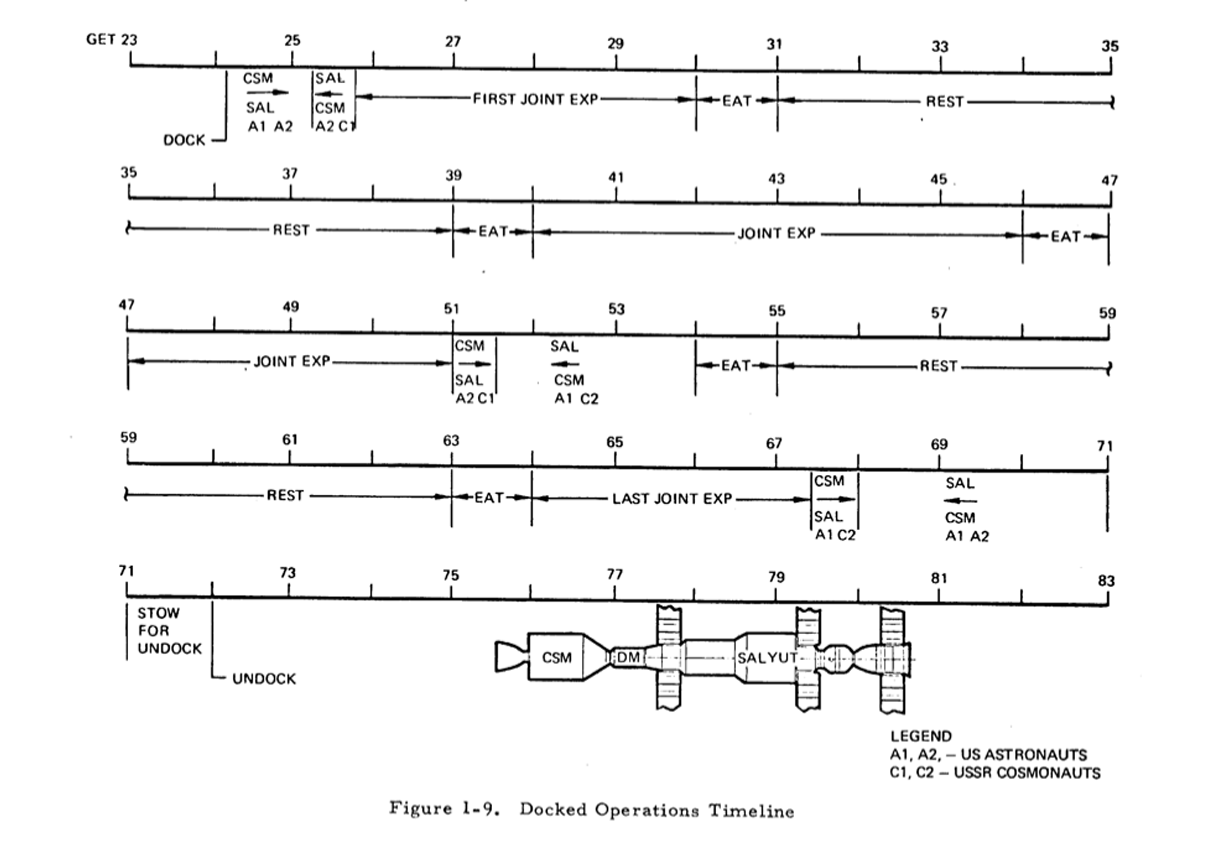
After the Soviets had a station that could accommodate two docked spacecraft, that meant they could swap crews without abandoning the station between crews, and that also meant that crews could be re-supplied by uncrewed cargo vessels, like the Progress that they developed in 1978, which allowed for truly long-duration missions and the ability to repair and maintain stations in orbit, with parts and supplies sent as needed.
If the Soviets had pulled this off for the Apollo-Salyut mission, they would have had the ability to resupply and re-crew stations at least three or four years earlier than they did, which could have been significant.
The Apollo-Soyuz mission as it flew was, of course a great success and a milestone in international cooperation in space, including the first time anyone in space ate borscht while pretending it was vodka:

And, as far as an American spacecraft docking with a Soviet or Russian space station, that did eventually happen, with the Shuttle-Mir docking missions between 1994 and 1998 that helped the U.S. plan and train for the construction of the ISS.
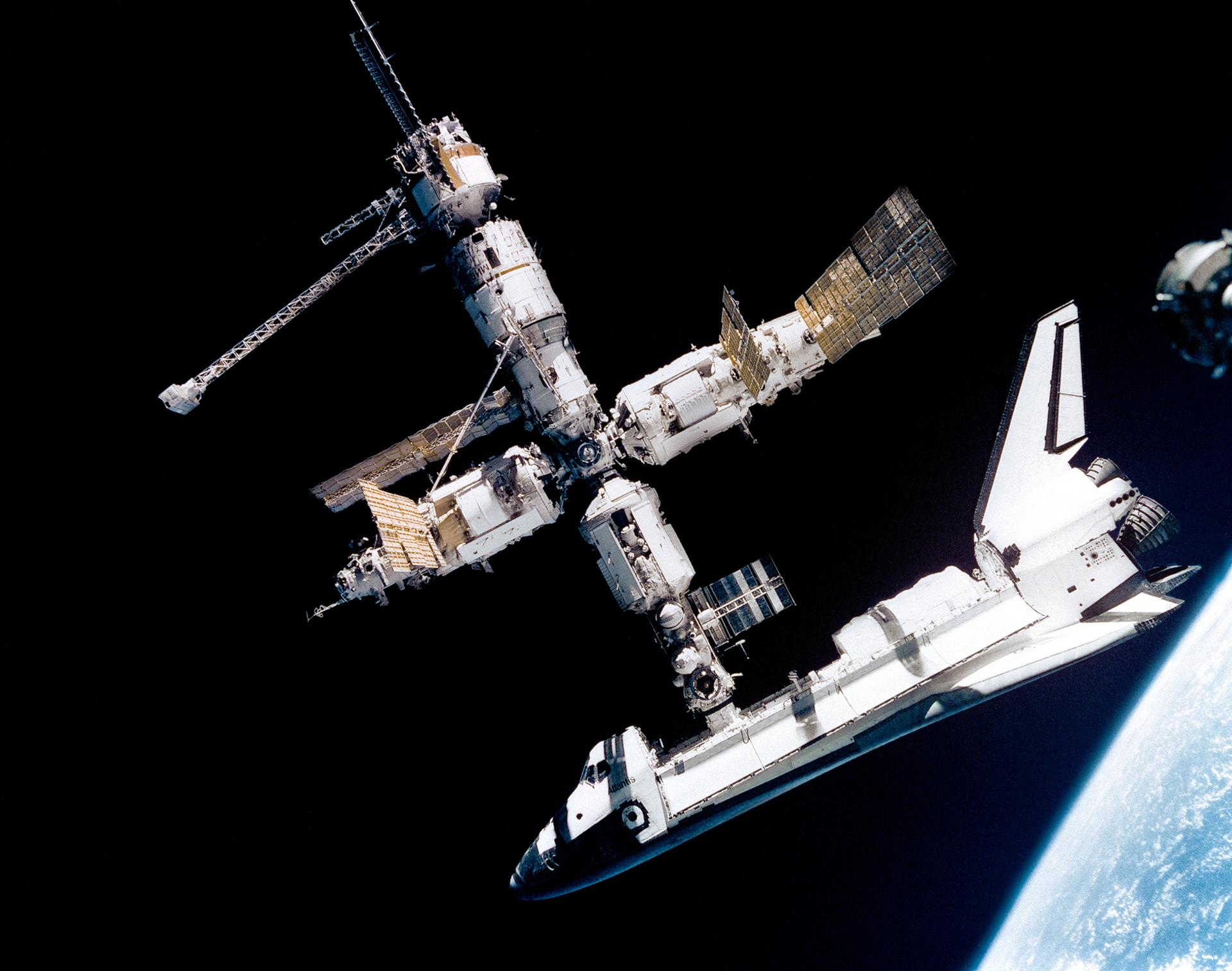
I’m still surprised I wasn’t aware of this amazing Apollo-to-Salyut plan before; I’ve always admired the Apollo-Soyuz Test Project, but I had no idea how much more ambitious it could have been.
